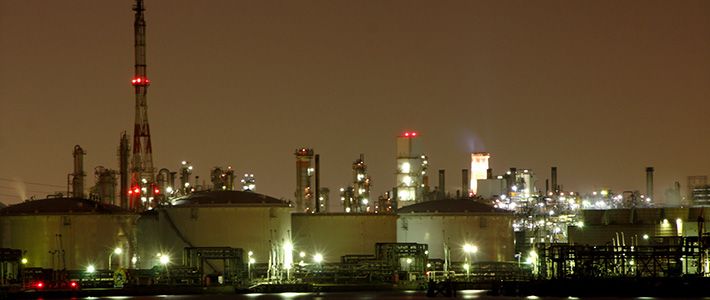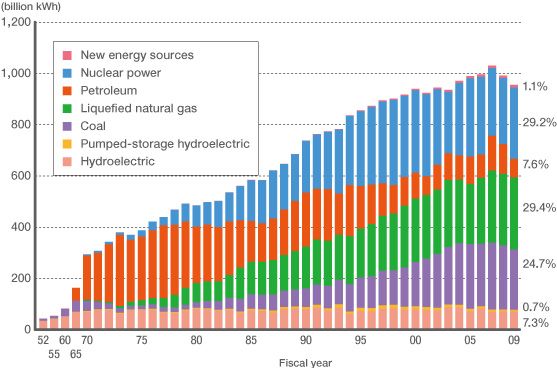
Changes in Japan’s Energy Sources
Science Technology Lifestyle- English
- 日本語
- 简体字
- 繁體字
- Français
- Español
- العربية
- Русский

Source: 2010 Annual Energy Report, issued by the Agency for Natural Resources and Energy
In Japan, since the 1970s, electricity was primarily generated by thermal power plants using such energy sources as coal, liquefied natural gas, and petroleum. The nation later shifted to more reliance on nuclear power, in response to soaring fuel costs and other factors, but the recent Fukushima nuclear disaster has generated renewed interest in thermal power.
There is at the same time a growing awareness across Japan of the need to conserve energy. Businesses and consumers are cutting down on the use of electrical devices, and various measures have been adopted to reduce energy use, including the rescheduling of workdays at manufacturing plants from weekdays to the weekend. People are also becoming more interested in wind power, solar energy, and other new energy sources, which currently account for around 1% of Japan’s total power supply.
nuclear power energy electrical power supply thermal power hydro power natural energy